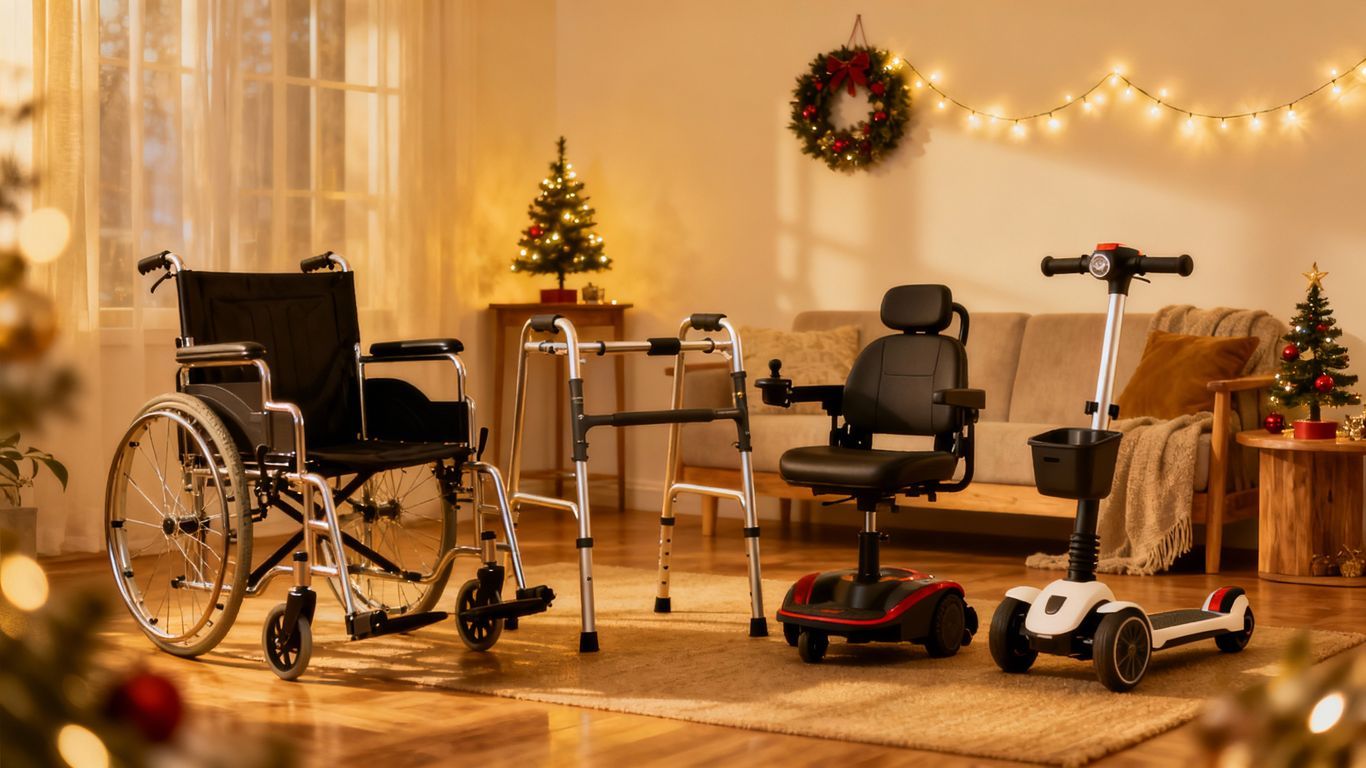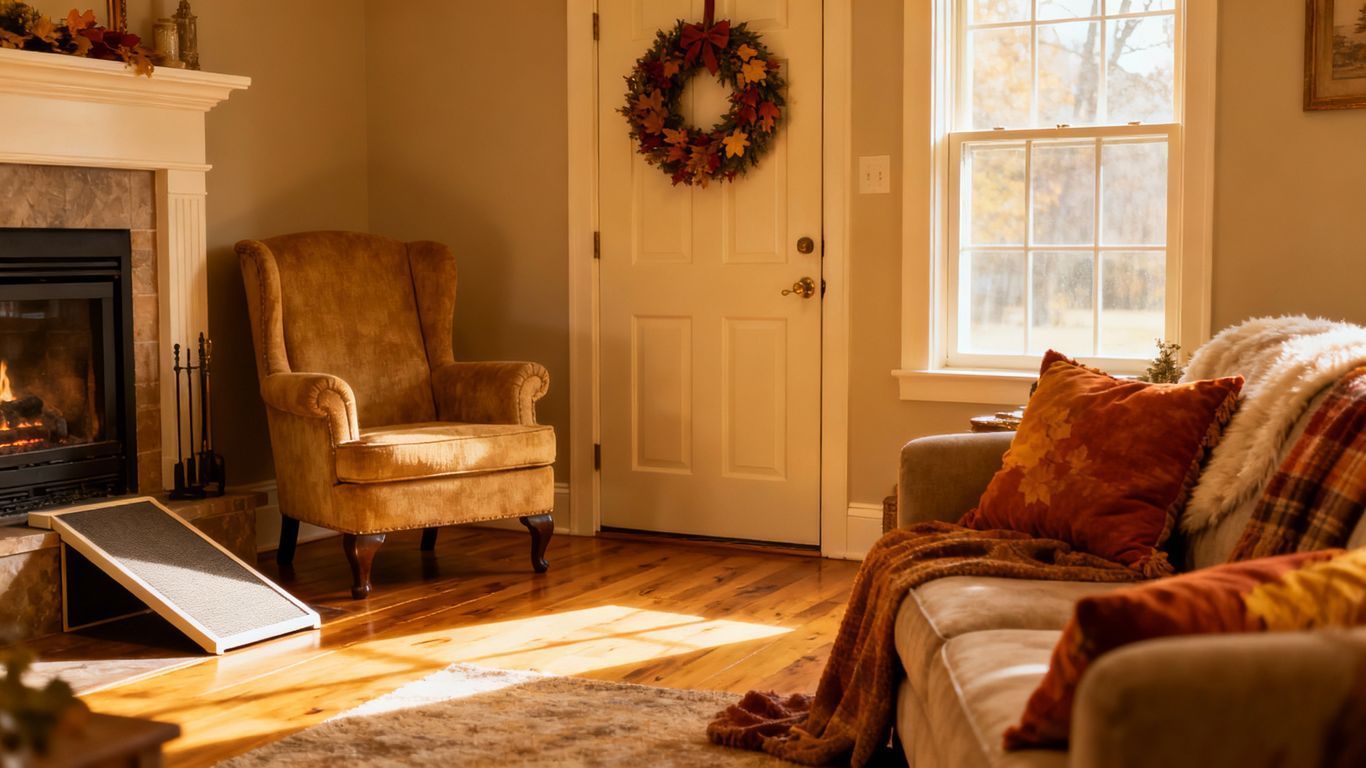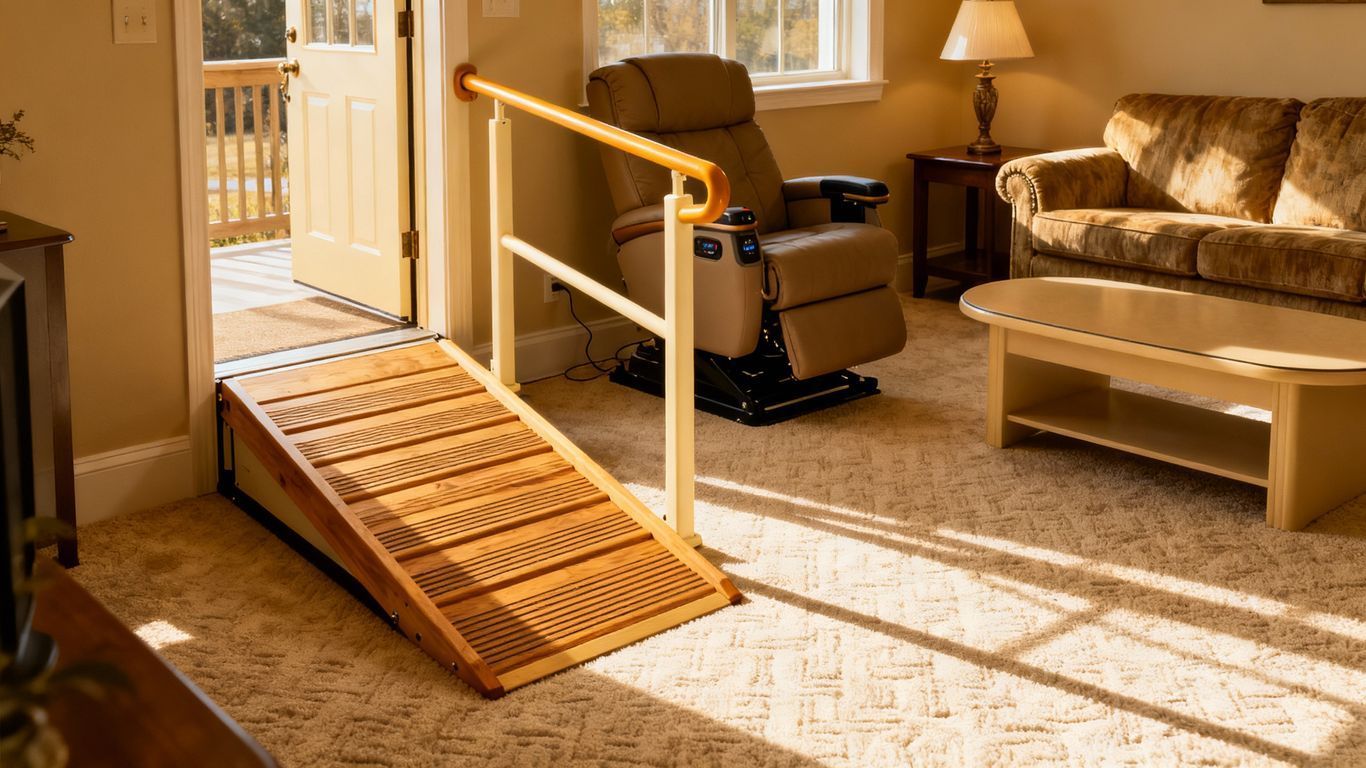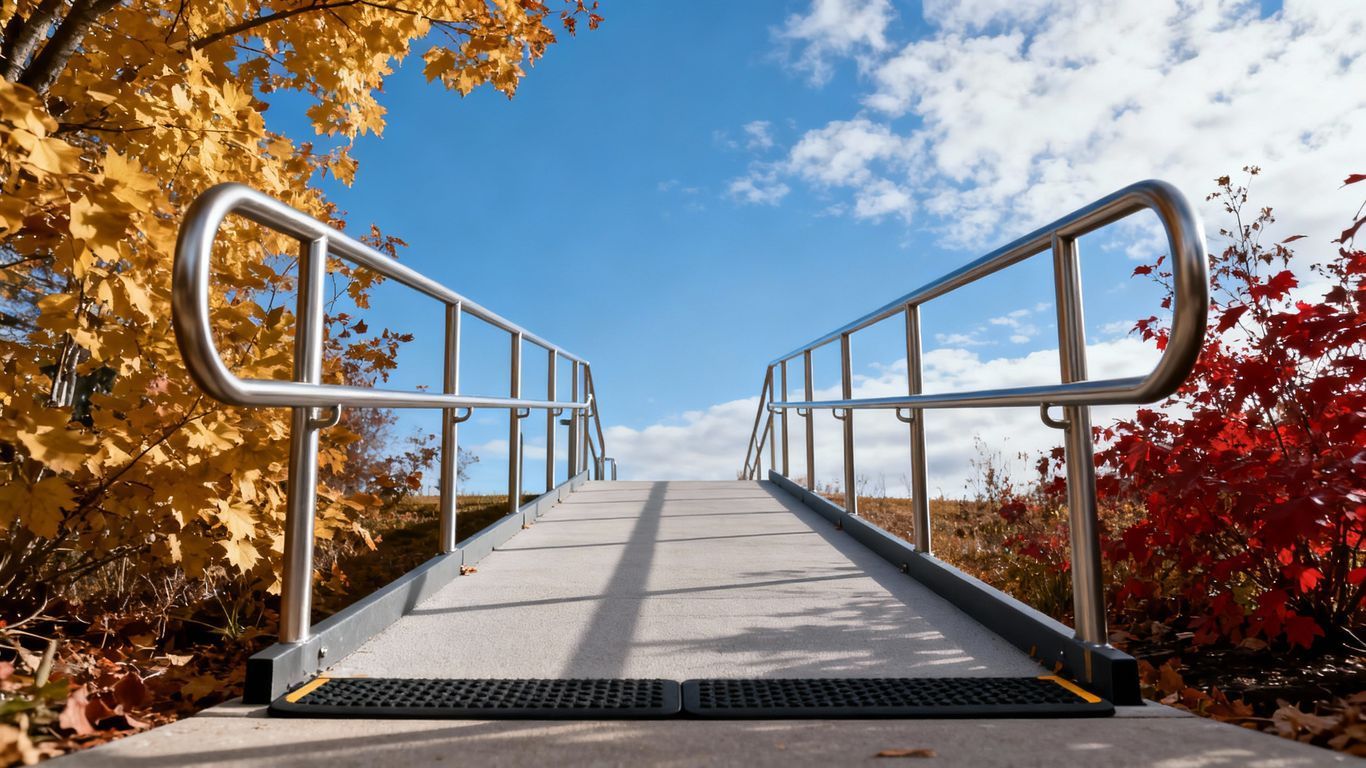Stair Lift vs. Vertical Platform Lift: Which is Right for Your Home in Chickamauga, LaFayette, or Chattanooga?
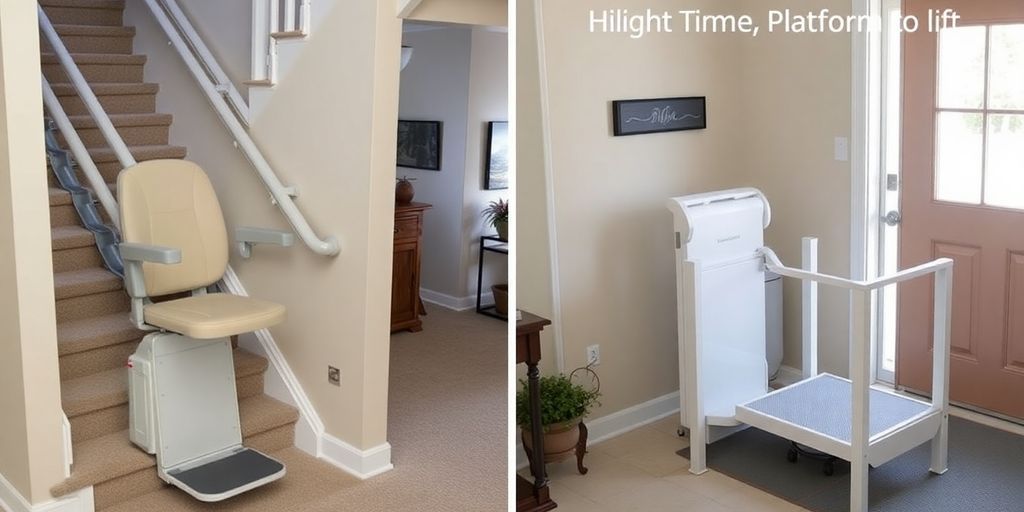
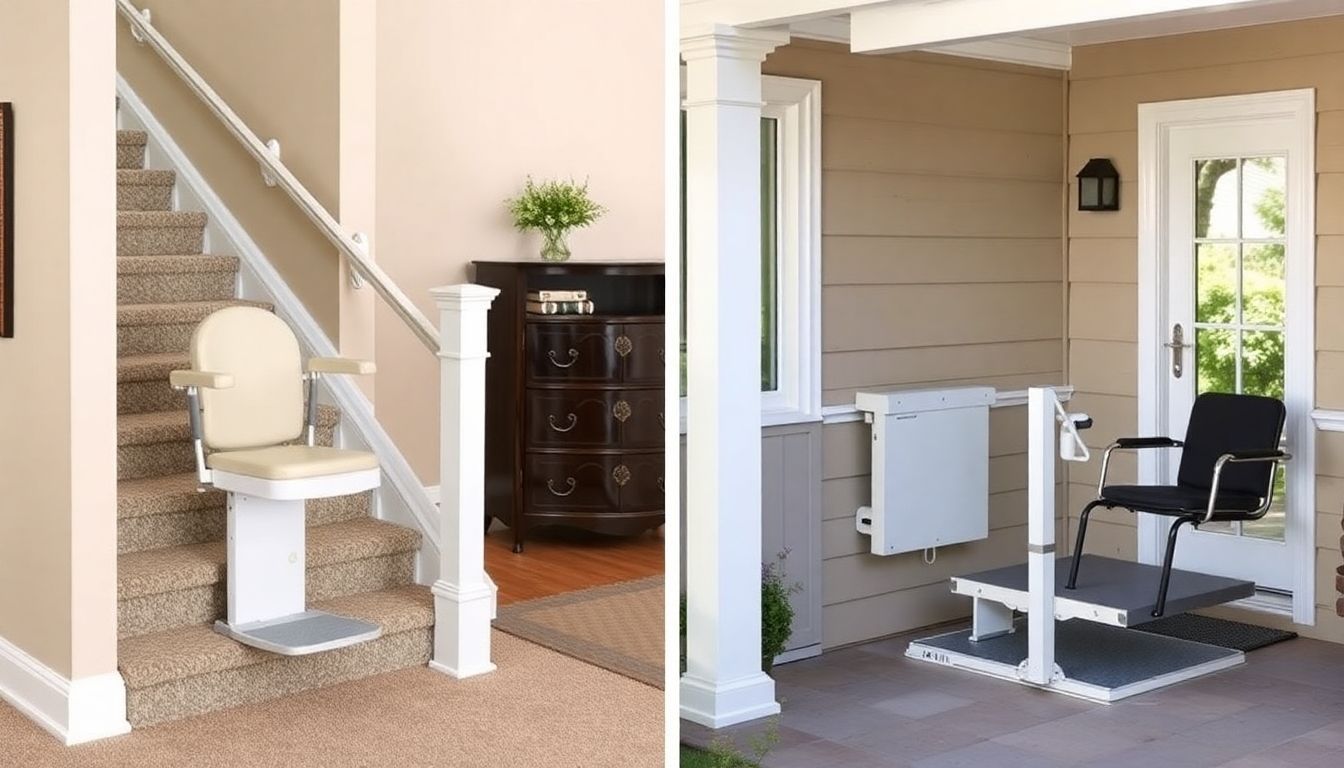
Choosing the right lift for your home can feel overwhelming, especially with options like stair lifts and vertical platform lifts. If you live in Chickamauga, LaFayette, or Chattanooga, understanding the differences between these two types of lifts can help you make the best decision for your needs. This guide will break down what each lift offers, their benefits, and other important factors to consider before making a purchase.
Key Takeaways
- Stair lifts are ideal for homes with stairs and limited space.
- Vertical platform lifts are better suited for wheelchair users and can be installed outdoors.
- Cost varies between the two, with stair lifts generally being less expensive upfront.
- Safety features like emergency stops and weight limits are crucial for both types of lifts.
- Consulting with professionals can help ensure you choose the right lift for your home.
Understanding Stair Lifts and Vertical Platform Lifts
What Is a Stair Lift?
Okay, so a stair lift is basically a chair that moves up and down your staircase. Think of it as a personal, mini-elevator just for stairs. It's designed to help people who have trouble climbing stairs due to mobility issues, whether it's from age, injury, or disability. They're pretty common and can make a huge difference in someone's life, allowing them to stay in their home instead of having to move.
- Typically installed on an existing staircase.
- Can be customized for curved or straight staircases.
- Operated by a simple control, often a joystick or button.
Stair lifts are a solid option for many homes, but it's important to consider the specific needs of the user and the layout of the house. Not all staircases are created equal, and some might require more extensive modifications than others.
What Is a Vertical Platform Lift?
Now, a vertical platform lift (VPL) is a different beast altogether. Imagine a small elevator that lifts a wheelchair and its occupant straight up and down. These are often used when stairs aren't an option, or when someone needs to access a raised porch or deck. They're more heavy-duty than stair lifts and can handle wheelchairs and scooters easily. You can find chair lifts and VPLs at medical supply stores.
- Designed for wheelchair and scooter access.
- Can be installed indoors or outdoors.
- Requires a bit more space than a stair lift.
Key Differences Between the Two
So, what's the real difference? Well, it boils down to a few things. Stair lifts are for people who can transfer to a seat but have trouble with stairs. VPLs are for people who use wheelchairs or scooters and need to stay in their mobility device. Space is another factor; stair lifts fit on staircases, while VPLs need a dedicated area. And of course, cost is a big consideration. VPLs generally cost more than stair lifts because they're more complex and require more extensive installation. Here's a quick rundown:
- User Needs: Stair lifts for those who can transfer; VPLs for wheelchair users.
- Space Requirements: Stair lifts fit on stairs; VPLs need a platform area.
- Cost: VPLs are typically more expensive.
Benefits of Stair Lifts for Chickamauga Homes
Space Efficiency
Stair lifts are great because they don't take up a ton of room. They fold up when you're not using them, which is super helpful if you have a smaller house in Chickamauga. Unlike ramps or some platform lifts, they don't permanently eat into your living space. This is especially important if you're trying to keep your home feeling open and not cluttered. Plus, they only cover the width of the staircase, leaving room for others to use the stairs normally.
Ease of Use
Stair lifts are designed to be simple to operate. Most models come with:
- Easy-to-use controls, often just a simple up/down switch.
- Remote controls, so you can call the lift to you.
- Safety sensors that stop the lift if it encounters an obstacle.
They're really made with the user in mind, focusing on making the process as straightforward and stress-free as possible. It's all about getting you where you need to go without any fuss.
Cost Considerations
When thinking about home modifications, cost is always a big factor. Stair lifts enhance home accessibility at a reasonable price, especially when compared to the more extensive renovations needed for a vertical platform lift or even moving to a new, single-story home. While the initial purchase and installation do involve an investment, the long-term benefits often outweigh the costs. Plus, you're staying in the home you love, which is priceless. There are also different models available to fit various budgets, so you can find something that works for you. Don't forget to factor in potential savings on healthcare costs by preventing falls and injuries.
Advantages of Vertical Platform Lifts in LaFayette
Accessibility for Wheelchairs
Vertical platform lifts really shine when it comes to wheelchair accessibility. They're designed to move a wheelchair and its user between different levels of a home, something stair lifts just can't do. This makes a huge difference for people who rely on wheelchairs for mobility. It's not just about getting from one floor to another; it's about being able to access all areas of your home without needing to transfer out of your wheelchair. Plus, they can handle heavier loads, accommodating most power wheelchairs and scooters. If you're looking at home modifications for disabled access, this is a big one.
Installation Flexibility
One of the great things about vertical platform lifts is their installation flexibility. They don't need a staircase, so you can put them in places where a stair lift wouldn't work. Think about it:
- Inside or outside your home
- Attached to a deck or porch
- In a garage to reach an upper level
This opens up a lot of possibilities for making your home more accessible. Plus, they often require less structural modification than elevators, which can save you time and money during installation. It's all about finding the best solution for your specific needs and home layout.
Long-Term Investment
While the initial cost might seem higher than a stair lift, a vertical platform lift can be a smart long-term investment.
They're built to last and can significantly increase the value of your home by making it more accessible to a wider range of potential buyers. As the population ages, accessible homes are becoming more and more desirable. So, while it's an investment now, it could pay off in the future, both in terms of your own comfort and the resale value of your property.
Installation Process for Stair Chairs in Chattanooga
Site Assessment
Before you even think about getting a stair lift, someone needs to come out and take a look at your stairs. This isn't just a quick glance; it's a detailed assessment. They'll measure the length of the staircase, check for any obstructions like doorways or tight corners, and figure out what kind of mounting is needed. The goal is to determine the best type of stair lift for your specific situation. They'll also look at the electrical setup to make sure everything is up to code and can handle the lift's power needs. It's a crucial step to avoid surprises later on. This is where you can discuss any specific needs or concerns you have about the installation process. For example, if you have a particularly narrow staircase, that will affect the customized chairlifts that can be installed.
Choosing the Right Model
Okay, so the assessment is done, and now it's time to pick a stair lift. There are a bunch of different models out there, and it can be a little overwhelming. You've got straight stair lifts, curved stair lifts, outdoor stair lifts... the list goes on. Think about what features are important to you. Do you want a swivel seat? A folding footrest? Remote controls? Also, consider the weight capacity of the lift to make sure it can safely accommodate the user. Don't be afraid to ask a lot of questions and compare different models before making a decision. It's a big investment, so you want to get it right. The right model will make all the difference in your daily life.
Professional Installation Tips
So, you've picked out your stair lift, and it's time for installation. Unless you're super handy and know what you're doing, this is definitely a job for the pros. Here are a few things to keep in mind:
- Make sure the installers are licensed and insured.
- Ask about the installation timeline and what to expect during the process.
- Clear the area around the staircase to give the installers plenty of room to work.
- Be prepared for some noise and disruption during the installation.
- After the installation, have the installers show you how to use the lift properly and answer any questions you have.
A professional installation ensures that the stair lift is installed safely and correctly, minimizing the risk of accidents or malfunctions. It also ensures that the lift meets all local safety regulations and building codes.
Comparing Costs: Stair Lift vs. Vertical Platform Lift
Initial Purchase Price
Okay, let's talk money. The upfront cost is usually the first thing people think about. Stair lifts generally have a lower initial purchase price compared to vertical platform lifts. This is because they're simpler machines designed for a specific task: moving someone up and down stairs. Vertical platform lifts, on the other hand, are more complex. They need to accommodate wheelchairs and travel vertically, which requires more robust engineering and safety features. Think of it like buying a sedan versus a small elevator – the elevator is always going to cost more. For those who need to stay in their wheelchair, a vertical platform lift is recommended as a more suitable option.
Maintenance Expenses
Don't forget about the long-term costs. Both stair lifts and vertical platform lifts need regular maintenance to keep them running smoothly and safely. Stair lifts typically have fewer moving parts, so their maintenance tends to be less expensive. You might need to lubricate parts, check the batteries, and have a yearly inspection. Vertical platform lifts, with their more complex mechanisms, might require more frequent servicing and potentially more expensive repairs. Think about things like hydraulic systems, safety sensors, and platform adjustments. It's a good idea to ask about maintenance contracts when you're buying either type of lift.
Insurance and Financing Options
Now, let's consider how you might pay for these things. Insurance coverage for home lifts can be tricky. It often depends on your specific policy and the reason you need the lift. Some policies might cover a portion of the cost if it's deemed medically necessary. It's worth checking with your insurance provider to see what they offer. Financing is another option. Many companies that sell stair lifts and platform lifts also offer financing plans. These can help spread out the cost over time, making it more manageable. Also, look into local or state programs that might offer assistance or grants for accessibility solutions for your home.
When budgeting for a stair lift or vertical platform lift, it's important to consider not only the initial purchase price but also the ongoing costs of maintenance and potential repairs. Financing options and insurance coverage can help make these accessibility solutions more affordable.
Here are some things to keep in mind:
- Get quotes from multiple companies.
- Read the fine print on warranties and service agreements.
- Factor in potential home modifications needed for installation.
Safety Features to Consider for Home Lifts
Emergency Stop Mechanisms
When you're looking at getting a lift for your home, one of the first things you should check is the emergency stop mechanism. These are designed to immediately halt the lift's movement if something goes wrong. It's usually a big, red button that's easy to see and reach. Make sure everyone who uses the lift knows where it is and how to use it. It's also a good idea to test it out during the initial setup to make sure it works properly. You don't want to find out it's faulty when you really need it.
Weight Capacity
Another super important thing to consider is the weight capacity of the lift. Exceeding the weight limit can cause serious damage to the lift and, more importantly, put the user at risk. Always check the manufacturer's specifications and make sure the lift can handle the weight of the user and any mobility devices they might be using, like a wheelchair or walker. It's better to go with a lift that has a higher weight capacity than you think you'll need, just to be on the safe side. Here are some things to keep in mind:
- Check the weight limit regularly.
- Make sure everyone using the lift is aware of the limit.
- Consider future needs when choosing a lift.
User-Friendly Controls
The controls for the lift should be easy to understand and operate, especially for people with limited mobility or cognitive impairments. Big, clearly labeled buttons are a must. The controls should also be positioned so they're easy to reach from a seated position. Some lifts even come with remote controls, which can be super handy. The goal is to make using the lift as simple and stress-free as possible. For enhanced safety, consider vertical platform lifts with user-friendly controls.
It's important to remember that safety features are not just about preventing accidents; they're also about providing peace of mind. Knowing that your lift is equipped with reliable safety mechanisms can make a big difference in how comfortable and confident you feel using it.
User Experience: Stair Lifts vs. Platform Lifts
Comfort and Convenience
When it comes to getting around your house, comfort is key. Stair lifts usually offer a pretty comfy seat and a smooth ride up and down the stairs. They're designed to be easy to use, with simple controls. Platform lifts, on the other hand, are more about functionality, especially if you use a wheelchair or scooter. They might not feel as luxurious as a stair lift, but they get the job done. Think about what matters most to you: a cozy ride or just getting from one floor to another without struggling.
User Feedback
Talking to people who actually use these things can be super helpful. Stair lift users often talk about how much they appreciate the independence it gives them. They can stay in their homes longer and not have to rely on others as much. Platform lift users tend to focus on the accessibility aspect. It lets them access all parts of their home, which can be a huge deal for quality of life. Reading reviews and testimonials can give you a better sense of what to expect from each type of lift. For example, you can read AmeriGlide reviews to get a sense of what users think about their products.
Adaptability to Different Home Designs
Not all houses are created equal, right? Stair lifts can usually fit on most staircases, even if they're a bit narrow or have curves. Platform lifts need more space because, well, they're bigger. They also might require some modifications to your home, like widening doorways.
It's worth thinking about how each type of lift will fit into your home's layout. Will it look out of place? Will it block doorways or hallways? These are important things to consider before making a decision.
Here are some things to consider:
- Space requirements
- Aesthetic impact
- Potential home modifications
Making the Right Choice for Your Home
Choosing between a stair lift and a vertical platform lift is a big deal. It's not just about convenience; it's about making your home more accessible and comfortable for everyone. There are a few things to consider before making a final decision. Let's break it down.
Assessing Your Needs
First, really think about what you need. What are your current mobility challenges? Are you using a wheelchair, or do you just need a little help with the stairs? Consider these points:
- Current mobility level: Can you walk short distances, or do you rely on a wheelchair full-time?
- Future needs: Will your mobility likely decrease over time?
- Home layout: How much space do you have available, and what are the dimensions of your staircase?
Consulting with Professionals
Don't go it alone! Talk to experts. A professional can assess your home and give you personalized advice. They can help you understand the pros and cons of each option based on your specific situation. They can also help you understand the top attractions in your area.
Future-Proofing Your Home
Think long-term. Choosing the right lift is an investment in your future. Consider how your needs might change over time. Will the lift still be suitable if your mobility decreases further? Will it add value to your home if you decide to sell?
It's also a good idea to think about maintenance. Regular servicing can keep your lift running smoothly for years to come. Factor in the cost of maintenance when making your decision. A little extra investment upfront can save you headaches down the road.
Final Thoughts
Choosing between a stair lift and a vertical platform lift really comes down to your specific needs and your home setup. If you have stairs and want something that fits right in, a stair lift might be the way to go. They’re usually easier to install and can be a good fit for smaller spaces. On the other hand, if you need to move a wheelchair or want something that can handle more weight, a vertical platform lift could be better. It’s all about what works best for you and your family. Take your time, think it through, and maybe even talk to a professional to help you decide. Whatever you choose, the goal is to make your home more accessible and comfortable.
Frequently Asked Questions
What is a stair lift?
A stair lift is a machine that helps people go up and down stairs. It has a chair that moves along a track, making it easier for those who have trouble walking.
What is a vertical platform lift?
A vertical platform lift is like a small elevator that lifts people in wheelchairs or with mobility aids straight up and down. It can be installed outside or inside a home.
What are the main differences between stair lifts and vertical platform lifts?
Stair lifts are for stairs and have a chair, while vertical platform lifts are for people in wheelchairs and move straight up and down. They also take up more space.
How much space do stair lifts need?
Stair lifts are designed to fit on most staircases. They usually take up less space than vertical platform lifts, which need more room to operate.
Are stair lifts easy to use?
Yes, stair lifts are simple to use. They have easy controls, and once you sit in the chair, you just push a button to go up or down.
How do I decide which lift is best for my home?
Think about your needs, how much space you have, and if you use a wheelchair. Talking to a professional can help you make the best choice.
